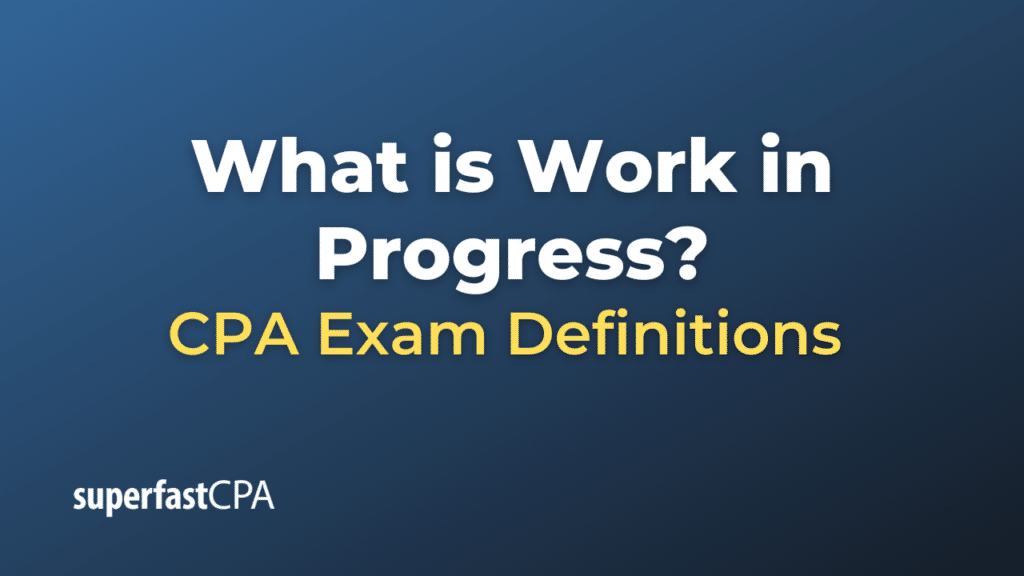Work in Progress
The terms “Work in Process” and “Work in Progress” are often used interchangeably, although they can have slightly different nuances depending on the industry or the accounting practices of a particular company. Both terms refer to items or tasks that are in the middle of the production process but have not yet been completed.
- Definition:
Work in Progress (WIP) refers to the goods or projects that are in various stages of completion but are not yet finished. In manufacturing, this could be goods that are partially assembled but still require more work before they can be sold to the customer. In service industries or project-based work, this could refer to tasks that are underway but not yet complete.
Importance:
- Asset Valuation: Work in Progress is considered an asset on a company’s balance sheet. It’s essential to accurately track and value WIP to ensure correct financial reporting.
- Production Efficiency: Monitoring the levels and costs of WIP can help a company identify bottlenecks and inefficiencies in the production process.
- Cash Flow Management: High levels of WIP can tie up capital, affecting a company’s cash flow and liquidity.
Components:
Work in Progress usually consists of:
- Materials: Raw materials that have been used in the unfinished goods.
- Labor: The work that has been performed but is not yet completed.
- Overhead: Indirect costs like utilities, rent, and other facility costs allocated to the unfinished goods.
Example of Work in Progress
Let’s consider a fictional software development company, “DevSoft Inc.,” to illustrate Work in Progress (WIP) in a service industry.
DevSoft Inc. specializes in creating custom software solutions for its clients. Projects typically go through the following stages:
- Stage 1: Requirement Analysis and Design
- Stage 2: Development
- Stage 3: Testing
- Stage 4: Deployment
DevSoft Inc. is currently working on a project for a client that involves creating a custom inventory management system. The total project cost is estimated at $50,000, which includes manpower, licenses, and overhead costs.
Work in Progress Status:
- Requirement Analysis and Design: Completed at a cost of $10,000
- Development: 50% complete, with $20,000 incurred so far
- Testing: Not yet started
- Deployment: Not yet started
Calculation of Work in Progress:
In this scenario, the Requirement Analysis and Design stage is complete, so it’s not considered WIP. The Development stage is half-finished and has incurred costs of $20,000 so far. This $20,000 is the Work in Progress for DevSoft Inc.
Accounting Entry:
To represent this on the balance sheet, DevSoft Inc. would make an accounting entry to reflect the Work in Progress.
Journal Entry for WIP:
- Debit Work in Progress Account: $20,000
- Credit Accounts Payable or Cash: $20,000
This WIP entry serves several purposes:
- Financial Reporting: It provides an accurate picture of the company’s financial status, showing the resources tied up in ongoing projects.
- Client Billing: Depending on the contract, the company may bill the client for the WIP amount, providing cash flow to continue the project.
- Project Management: Knowing the WIP helps project managers make informed decisions, such as whether to accelerate work, hire additional resources, or make other adjustments to meet deadlines and budgets.
So, in this example, the $20,000 of incurred development costs would be considered Work in Progress, helping DevSoft Inc. manage its project more effectively and maintain accurate financial records.













